Key takeaways:
- Independent publishing empowers authors to maintain creative control and connect with a supportive community.
- Understanding and defining your ideal audience through surveys and social media enhances content relevance and engagement.
- Creating detailed reader personas fosters empathy and guides writing decisions, making the process more personal and resonant.
- Gathering and implementing reader feedback is crucial for improving writing quality and aligning it with audience expectations.
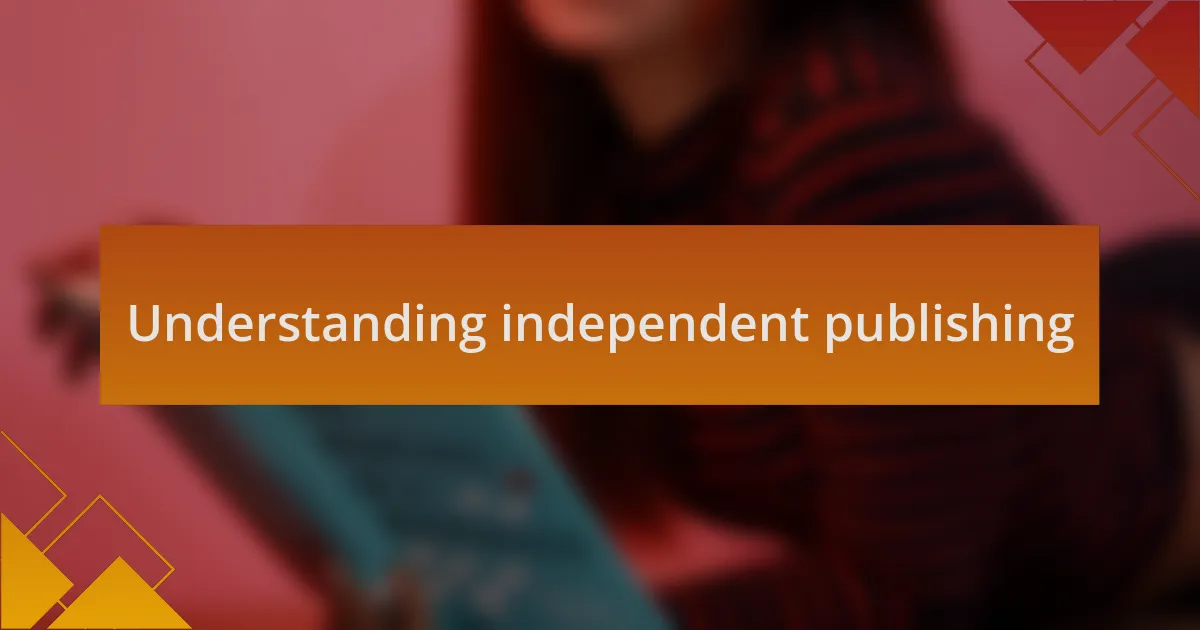
Understanding independent publishing
Independent publishing is a rewarding journey that allows authors to retain creative control over their work. I still remember the thrill of deciding every detail of my first book, from the cover design to the marketing strategy. Isn’t it empowering to know that your vision doesn’t have to fit into someone else’s mold?
One misconception I had was that independent publishing meant compromising quality. In contrast, I found that I could tap into resources that rival traditional publishing. As I collaborated with talented editors and designers, my book became a reflection of my passion and commitment. Have you ever felt that freedom when pursuing something you love? That’s the essence of independent publishing.
As I navigated this path, I discovered the importance of connecting with a supportive community. Joining networks of fellow independent authors not only provided valuable insights but also fostered lasting relationships. The emotional highs and lows of this journey can easily overwhelm you, but sharing experiences can make it all feel less daunting. Don’t you think having a tribe makes pursuing your passion even more worthwhile?
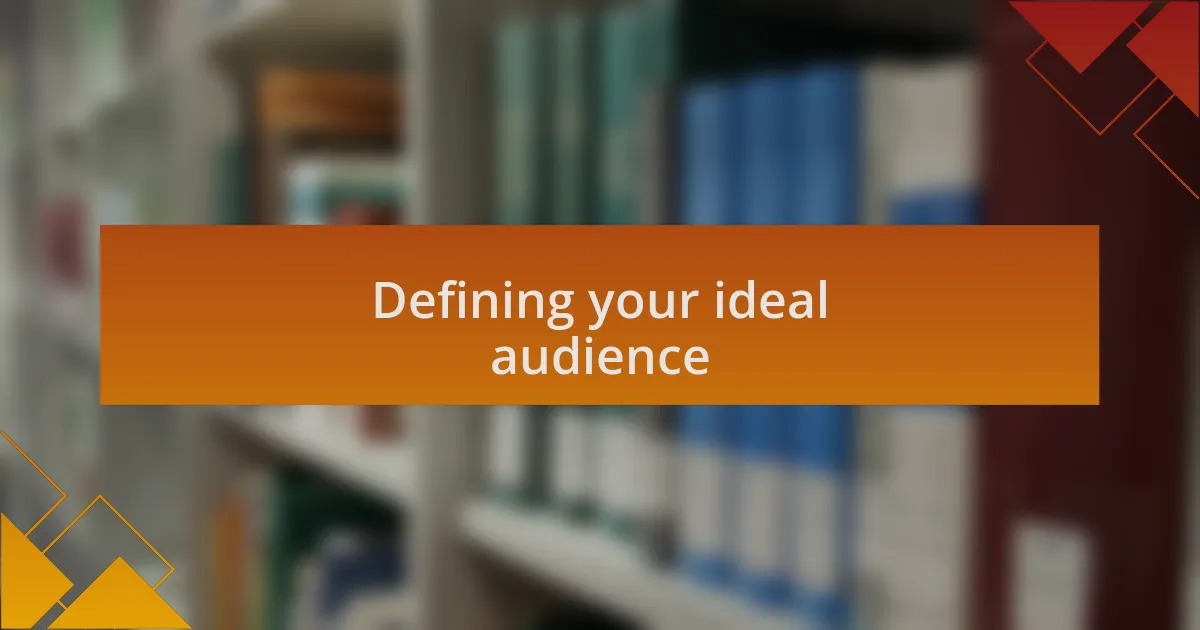
Defining your ideal audience
Defining your ideal audience is about understanding who will resonate with your message. I found that conducting surveys among my readers helped me identify their interests and preferences. Have you ever asked your audience directly what they want? It’s a simple yet powerful way to tailor your content.
As I analyzed the feedback, I began to notice specific patterns in demographics and interests. This insight was invaluable when shaping my marketing strategies. By focusing on particular traits, such as age or reading habits, I could reach people who truly connected with my work. Isn’t it fascinating how a deeper understanding of your audience can transform your approach?
I also learned that engaging with potential readers through social media platforms provided a unique perspective. I remember hosting a live Q&A session, and the energy was infectious as people shared their thoughts. This interaction not only defined my audience but also strengthened the bond between us. Don’t you agree that creating a dialogue makes your writing feel more personal and impactful?
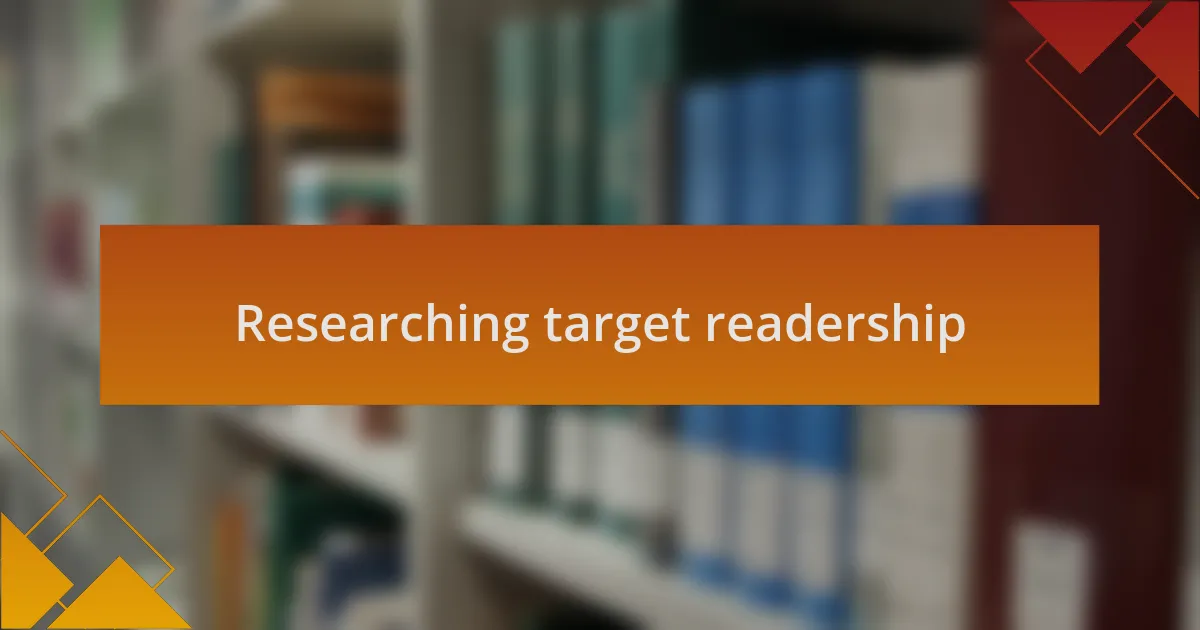
Researching target readership
Diving into the research for my target readership revealed just how diverse potential audiences can be. I once created a simple online poll asking readers about their favorite genres, and the responses were eye-opening. Did you know that one unexpected response can lead you down a rabbit hole of understanding your audience’s preferences? That single question opened doors to deeper conversations that shaped my content significantly.
I also took the time to analyze online communities and forums where my potential readers interacted. It was enlightening to observe the types of discussions happening around books and publishing. For instance, I remember stumbling upon a thread where readers passionately discussed what makes a book unforgettable. Seeing firsthand what ignited their enthusiasm helped me refine my writing to better resonate with those elements. Have you ever considered how much can be learned from simply lurking in the right spaces?
Finally, utilizing analytics tools gave me a clearer picture of who was visiting my site. By examining metrics like age and geographic location, I could tailor my content and outreach strategies accordingly. I recall a moment of realization when I found out that a significant portion of my audience was international. How could I not make my writing more accessible and appealing to such a vibrant group? This insight underscored the importance of not just writing for a hypothetical audience, but for real people with real stories and experiences.
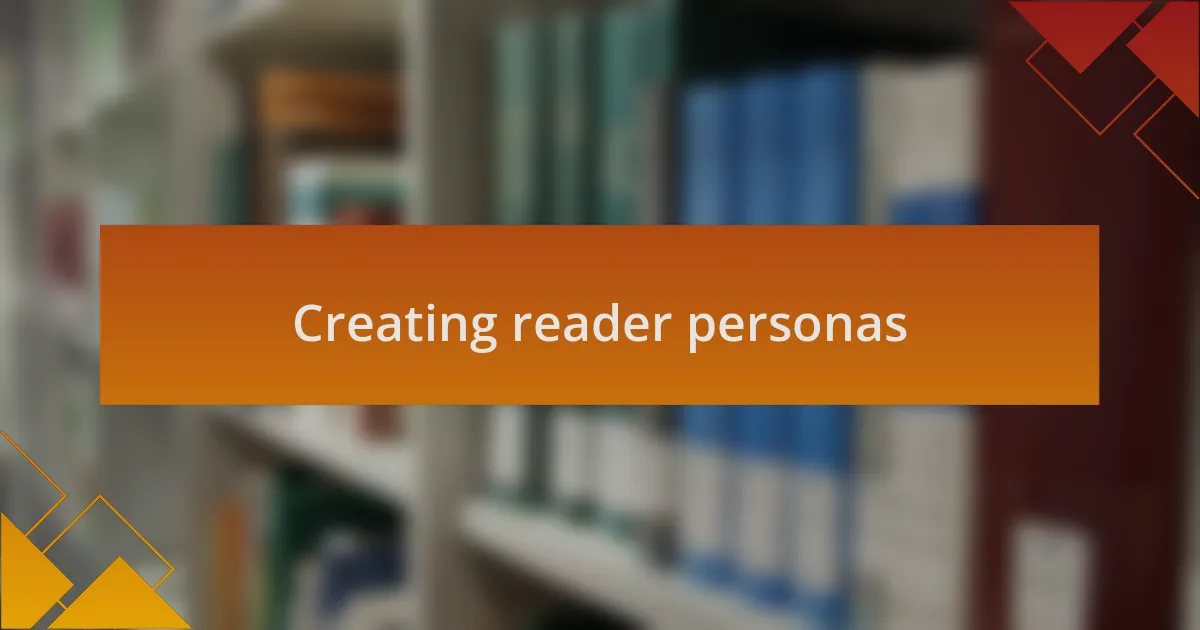
Creating reader personas
Creating reader personas is a game changer in understanding your audience. When I decided to craft detailed personas, I began by jotting down characteristics based on my research—age, interests, and even reading habits. One persona I created was “Adventurous Alice,” a 30-something who craves thrillers and deep character arcs. Thinking about her made me feel more connected to my writing, as if I was telling her a story directly.
It’s fascinating how these personas can guide everyday decisions. I remember once pouring over Alice’s preferences while brainstorming plot ideas for my next book. Suddenly, I found myself asking, “What would Alice love to see on this page?” This perspective shift ignited my creativity and clarity, allowing me to write with her in mind. It’s like having a trusted friend who nudges you in the right direction, ensuring the content resonates.
Creating these personas also encourages empathy. When I think of my ideal readers as real individuals with dreams and struggles, it makes the writing process feel more significant. Have you ever felt like your words were lost in a void? With personas, it’s like filling that void with vibrant narratives, reminding me of why I started writing in the first place. Connecting with people through my stories has never felt more tangible and rewarding.
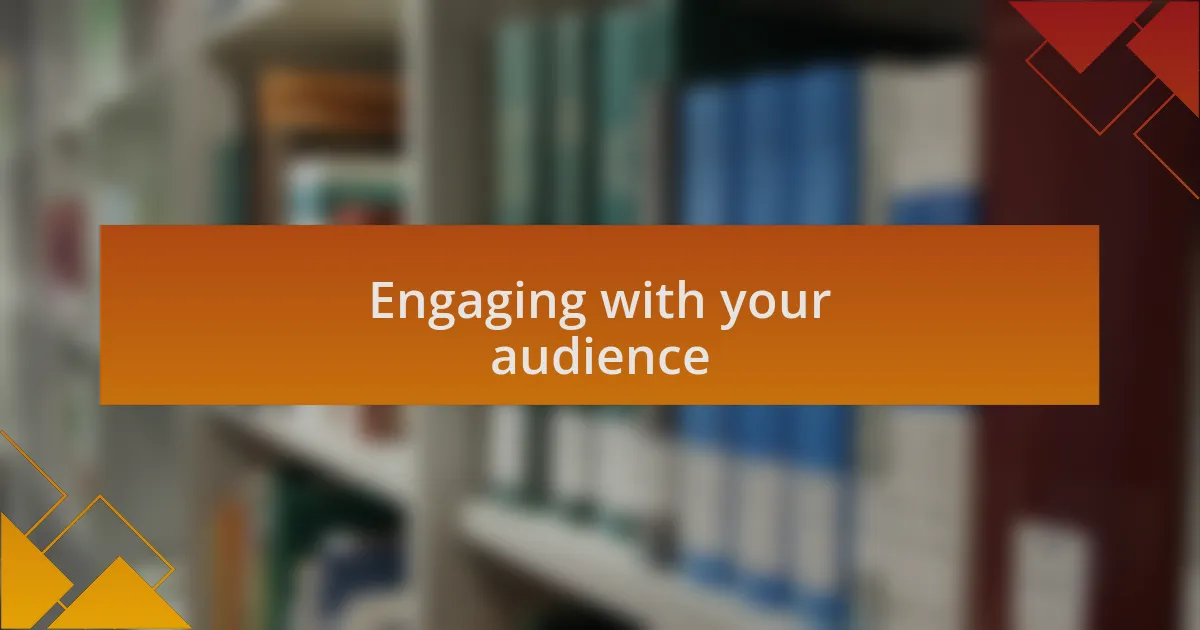
Engaging with your audience
Engaging with your audience goes beyond merely sharing content; it’s about sparking genuine conversations. I remember hosting a virtual book club where readers shared their thoughts on my latest release. Listening to their interpretations was eye-opening. Have you ever experienced that moment when your audience sees something in your work that you hadn’t intended? It can be both surprising and illuminating, showing the unique perspectives each reader brings to the table.
Another approach I’ve found effective is to actively seek feedback through social media polls and direct questions. I once asked my followers which character they resonated with the most, and the responses flooded in. One reader shared a heartfelt story about how a character’s journey mirrored her own struggles. It was a powerful reminder that my words were touching lives. Engaging with your audience in this way transforms the writing process from solitary to collaborative, deepening our connection.
Sometimes, I like to experiment with behind-the-scenes content, sharing snippets of my writing process or even my struggles. I once posted a video of me wrestling with a plot twist, and the comments were filled with encouragement and helpful suggestions. Have you thought about pulling back the curtain for your readers? This transparency can foster a sense of community, making your readers feel invested in your journey and more likely to stay engaged with your work.
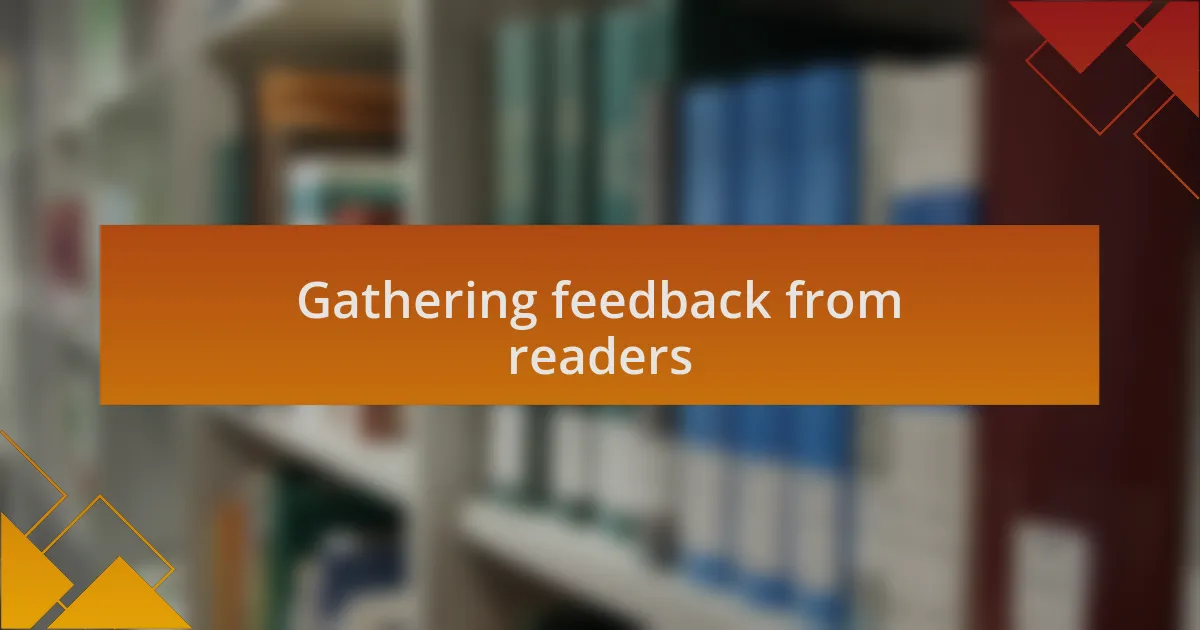
Gathering feedback from readers
Gathering feedback from readers is an invaluable step in honing your craft. I once organized a feedback session after a workshop, where I invited attendees to share their thoughts on my rough draft. The critiques ranged from minor plot suggestions to major thematic interpretations, but what struck me most was the emotional responses they shared. How often do we underestimate the power of a reader’s perspective?
Another method that has proven fruitful is creating a dedicated feedback email. I remember the thrill of receiving an email one morning from a reader who shared how a particular scene encouraged him to confront his fears. This personal connection reminded me that my writing was resonating on a deeper level than I initially realized. Have you ever stopped to consider how a single reader’s insight can reshape your work?
Surveys can also be a goldmine for feedback, especially when tailored thoughtfully. I conducted a survey post-launch, asking specific questions about elements like pacing and character development. What surprised me was not just the constructive criticism, but the joy and enthusiasm in their comments about moments they loved. It’s a reminder that a dialogue with readers isn’t just about critique; it’s about reinforcing the bond we share through storytelling.
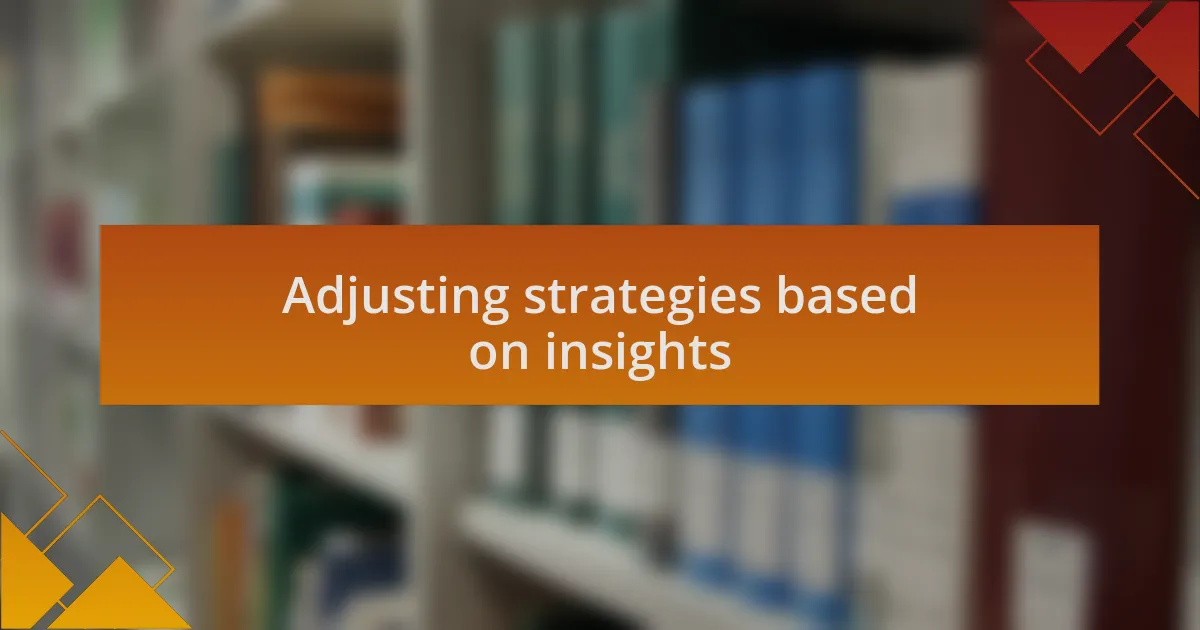
Adjusting strategies based on insights
Adjusting strategies based on insights is crucial for growth as an independent publisher. I remember a time when reader feedback highlighted a pacing issue in my latest draft. I took that insight seriously and made significant edits, which ultimately transformed the reader’s experience. Have you ever noticed how a small shift can create a much bigger impact?
I also found that analyzing reader demographics provided essential clues for my marketing approach. For instance, when I saw that a large portion of my readers were over 40, I shifted my language and themes to better resonate with that age group. It was fascinating to witness how these nuanced changes led to increased engagement and sales. What changes have you made that shocked you with their effectiveness?
Furthermore, I made a point to dive deep into social media interactions. A simple comment from a reader expressing love for a specific character inspired me to expand that character’s role in future projects. It was a lightbulb moment when I realized that listening wasn’t just about criticism; it was about discovering what readers truly value. How have interactions shaped your understanding of your audience’s desires?